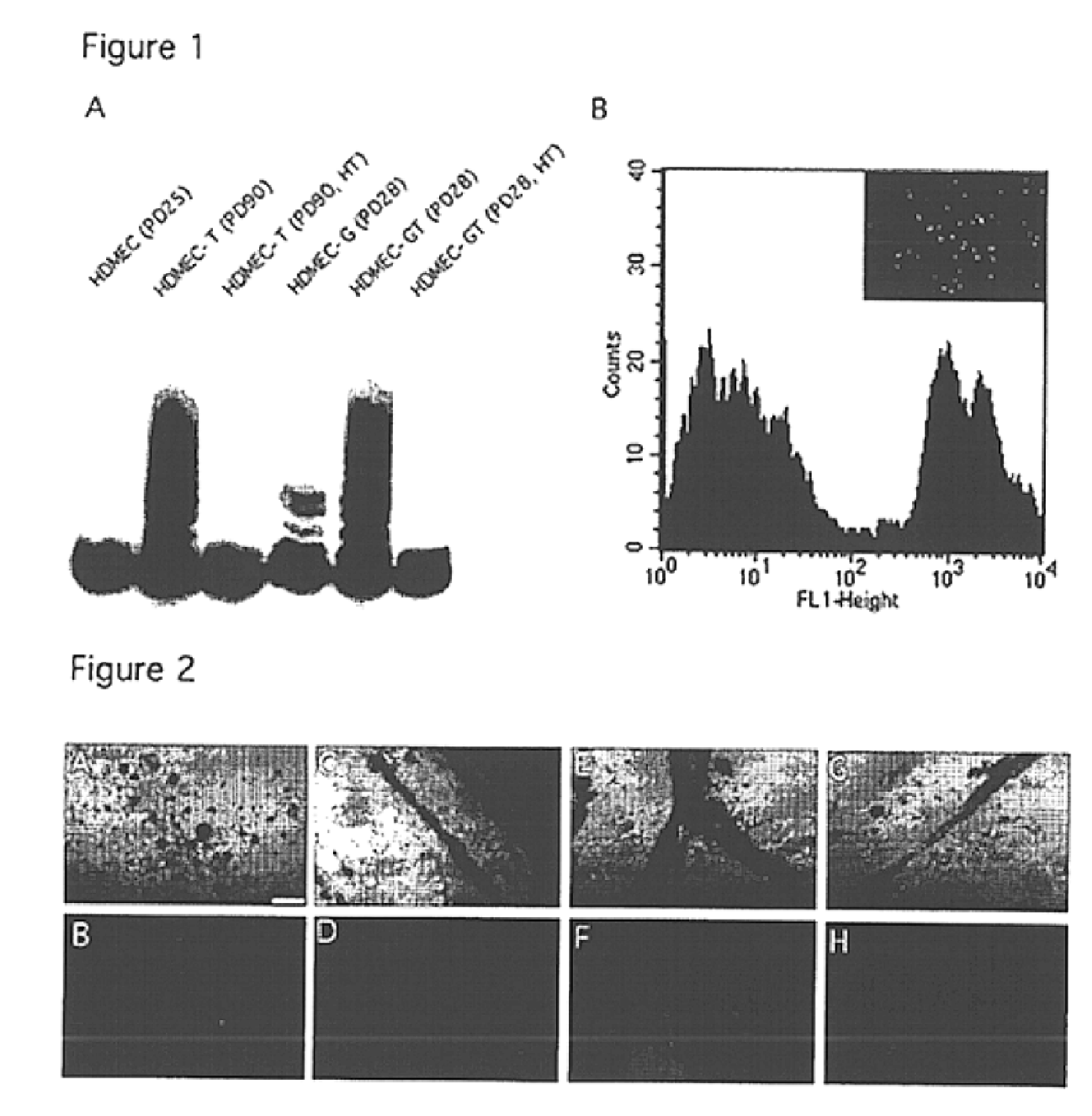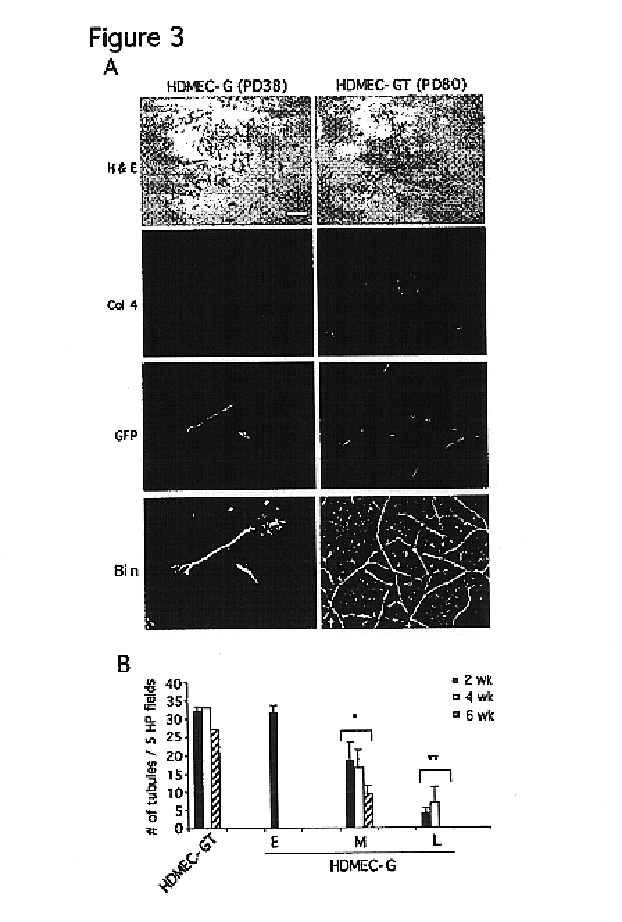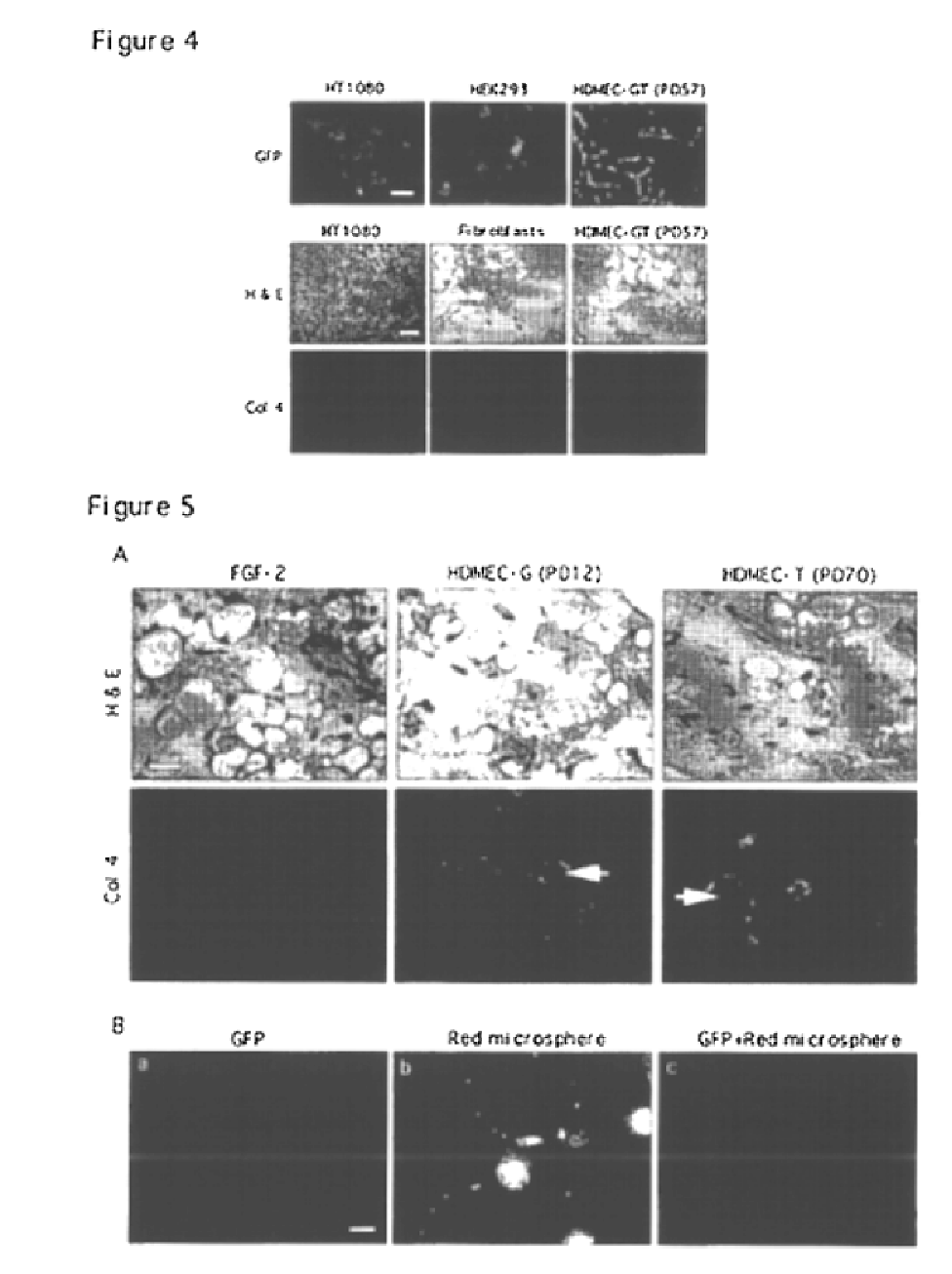Vivo assay for anti angiogenic compounds
a technology of angiogenic compounds and assays, which is applied in the field of vivo assays for anti angiogenic compounds, can solve the problems of time-consuming and labor-intensive microscopy or particle counter, inability to screen high throughput, and detrimental aspects
- Summary
- Abstract
- Description
- Claims
- Application Information
AI Technical Summary
Benefits of technology
Problems solved by technology
Method used
Image
Examples
Embodiment Construction
[0016]The practice of the present invention will employ, unless otherwise indicated, conventional methods of molecular biology, chemistry, biochemistry and pharmacology, within the skill of the art. Such techniques are explained fully in the literature. See, e.g., Remington's Pharmaceutical Sciences, 19th Edition (Easton, Pa.: Mack Publishing Company, 1995); Methods In Enzymology (S. Colowick and N. Kaplan, eds., Academic Press, Inc.); Wang, A. M., et al. in PCR Protocols: a Guide to Methods and Applications (M. A. Innis, et al., eds.) Academic Press (1990); Kawasaki, E. S., et al., in PCR Technology: Principles and Applications of DNA Amplification (H. A. Erlich, ed.) Stockton Press (1989); Hochuli, E., in Genetic Engineering, Principals and Practice, Vol. 12 (J. Stelow Ed.) Plenum, N.Y., pp. 87-98 (1990); Ausubel, F. M., et al., Current Protocols in Molecular Biology, John Wiley and Sons, Inc., Media Pa.; and, Sambrook, J.,
[0017]“Nucleic acid expression vector” or “Expression cass...
PUM
| Property | Measurement | Unit |
|---|---|---|
| time | aaaaa | aaaaa |
| time | aaaaa | aaaaa |
| time | aaaaa | aaaaa |
Abstract
Description
Claims
Application Information
 Login to View More
Login to View More - R&D
- Intellectual Property
- Life Sciences
- Materials
- Tech Scout
- Unparalleled Data Quality
- Higher Quality Content
- 60% Fewer Hallucinations
Browse by: Latest US Patents, China's latest patents, Technical Efficacy Thesaurus, Application Domain, Technology Topic, Popular Technical Reports.
© 2025 PatSnap. All rights reserved.Legal|Privacy policy|Modern Slavery Act Transparency Statement|Sitemap|About US| Contact US: help@patsnap.com



